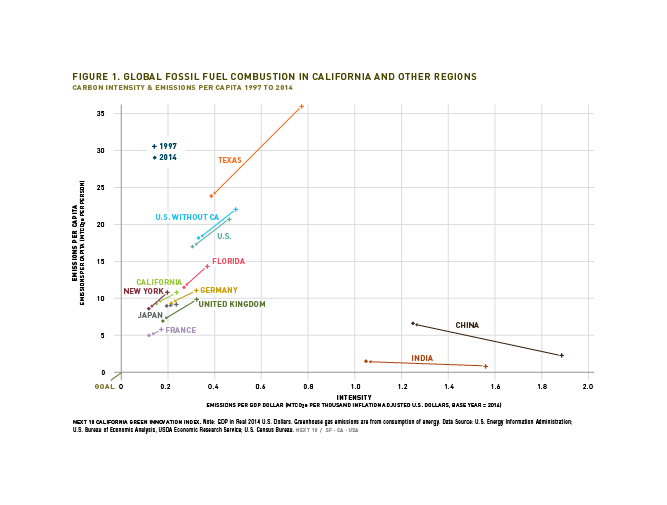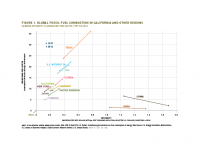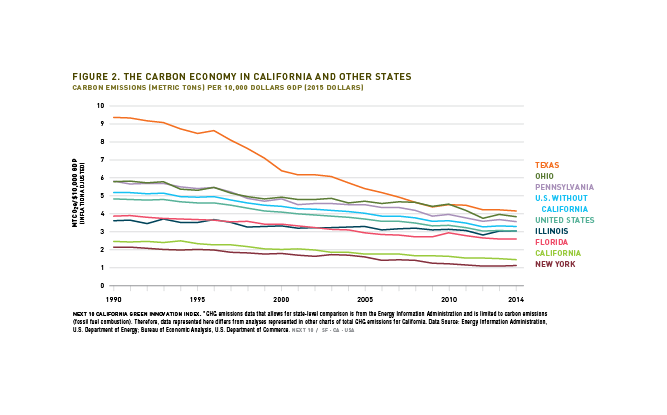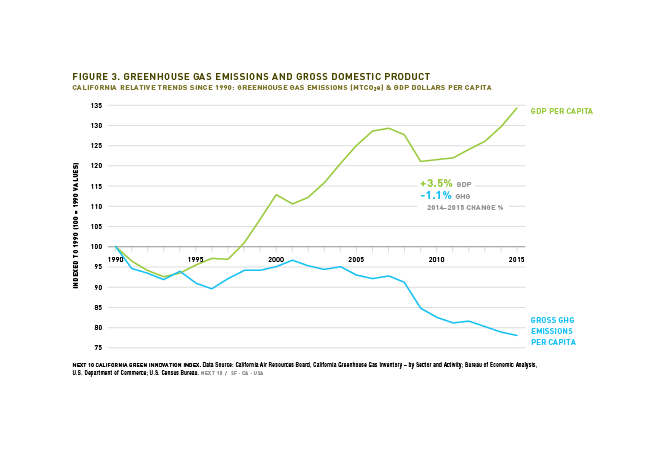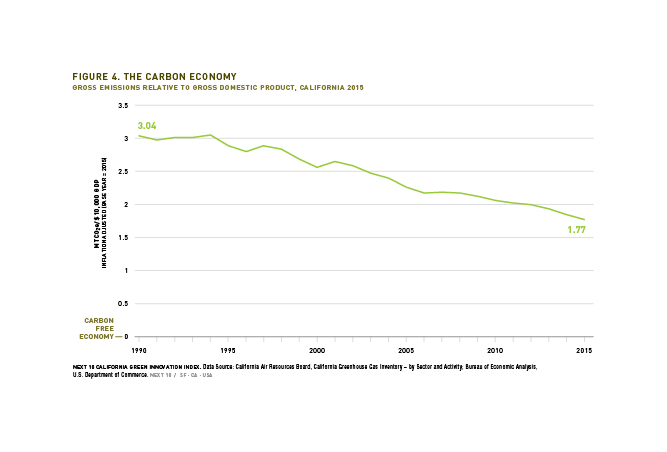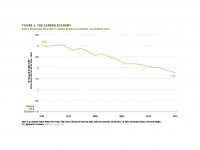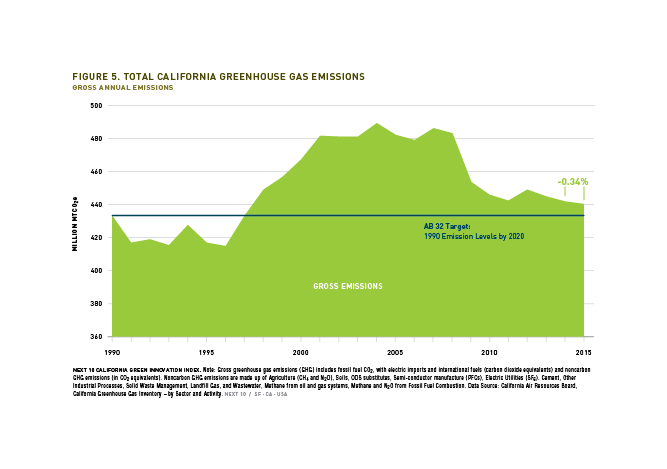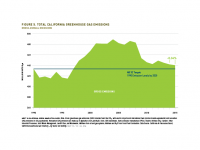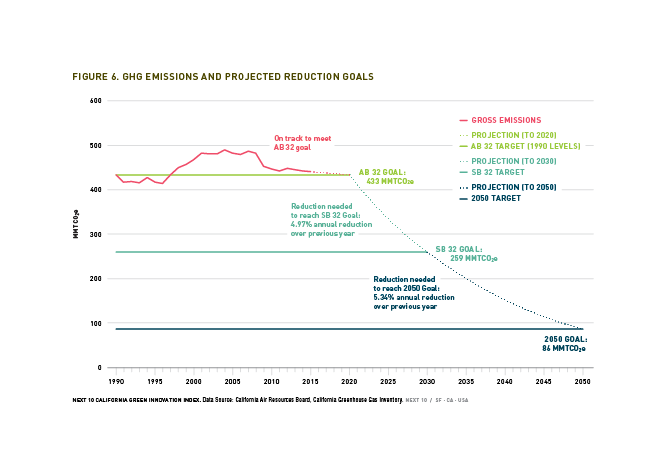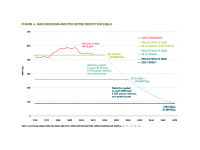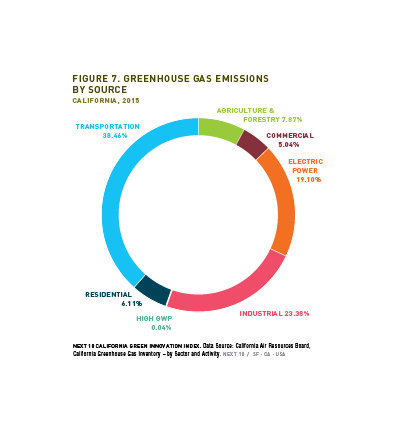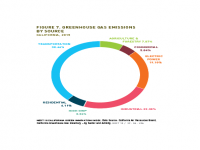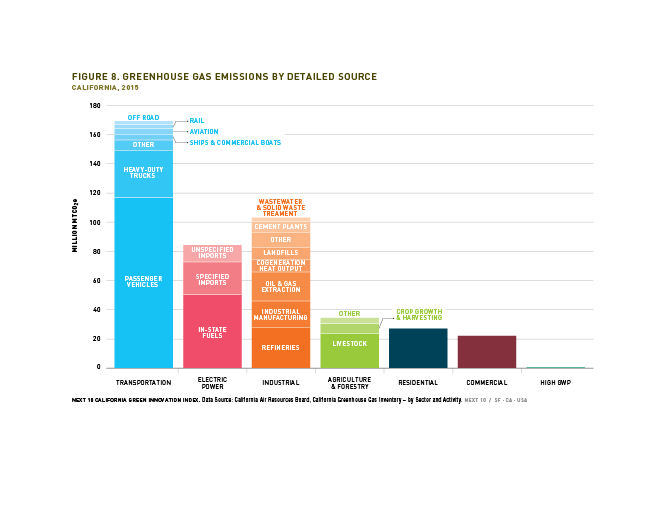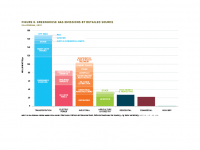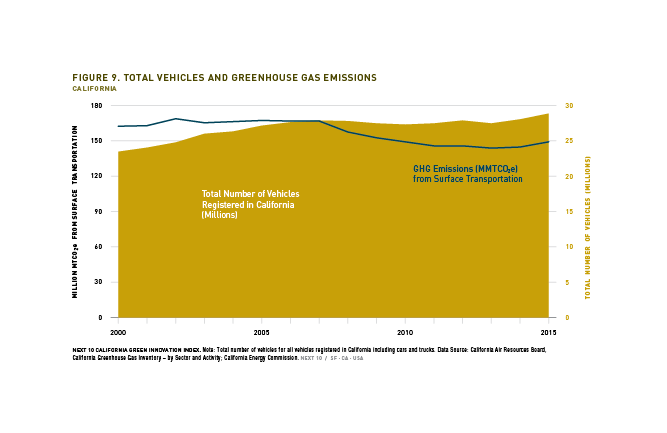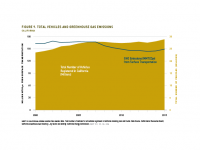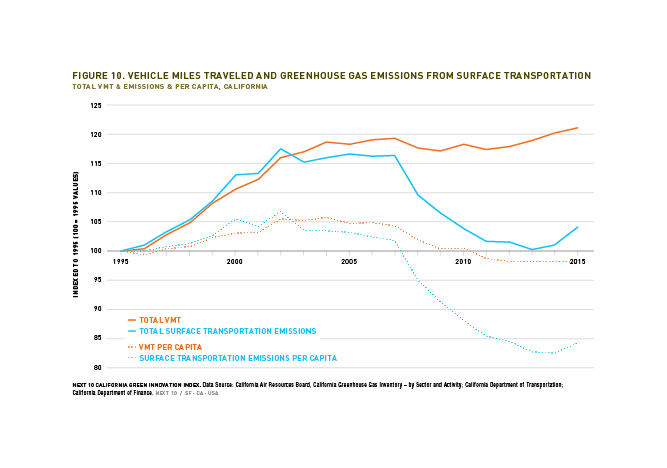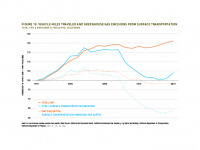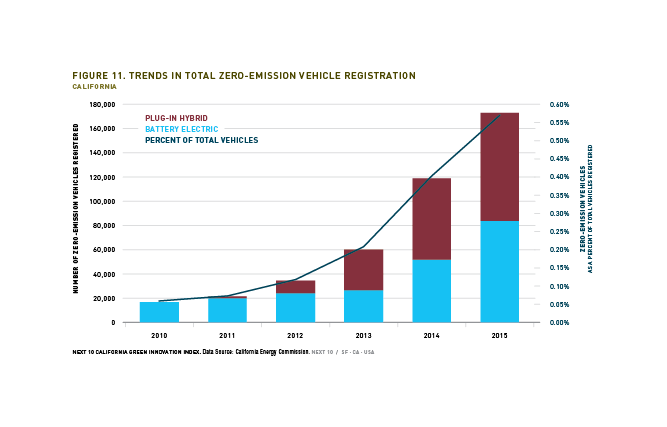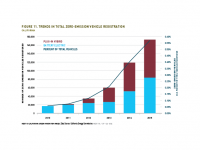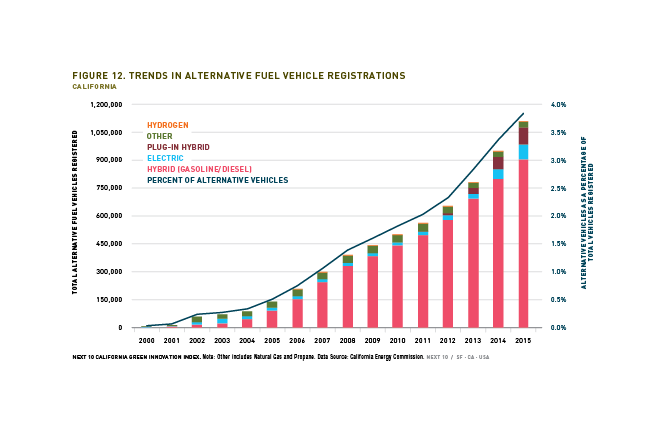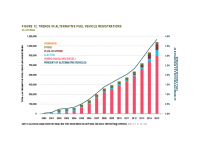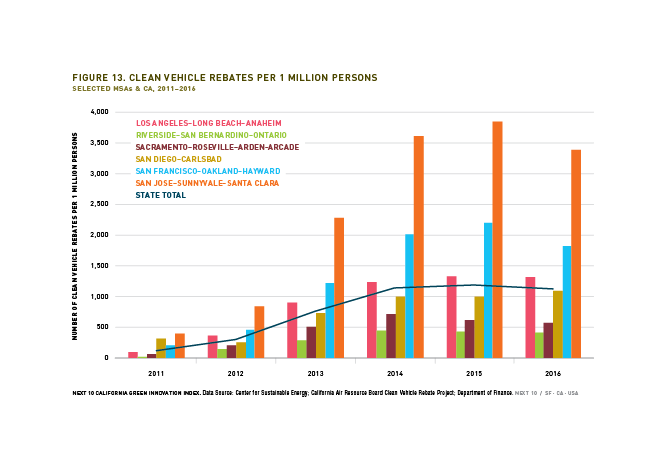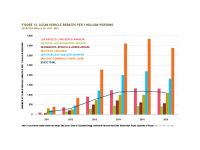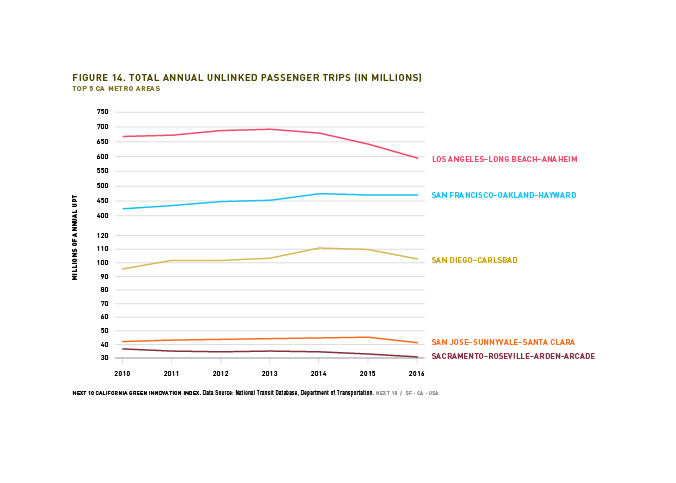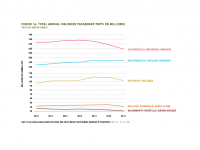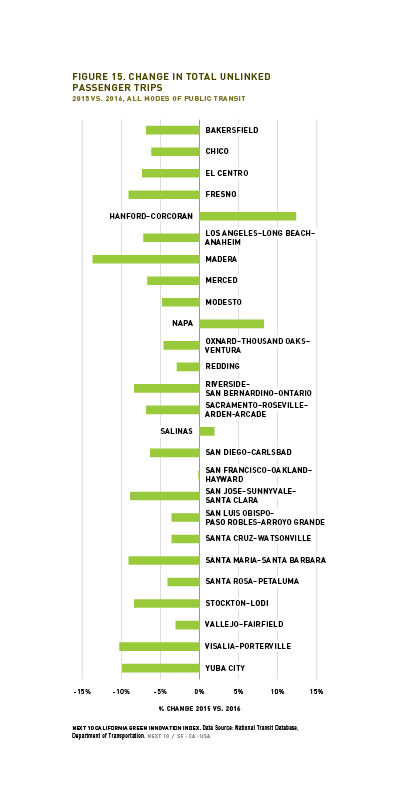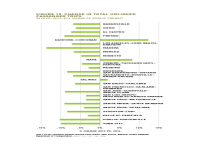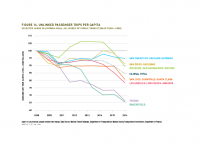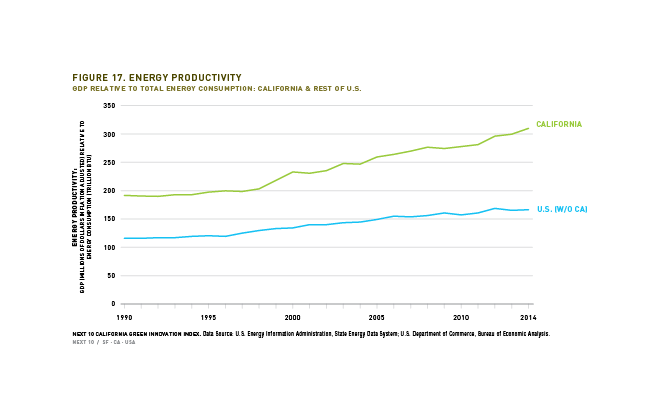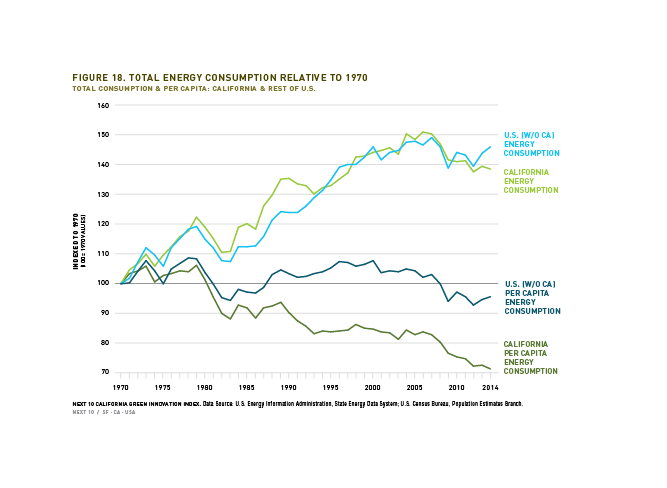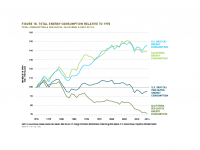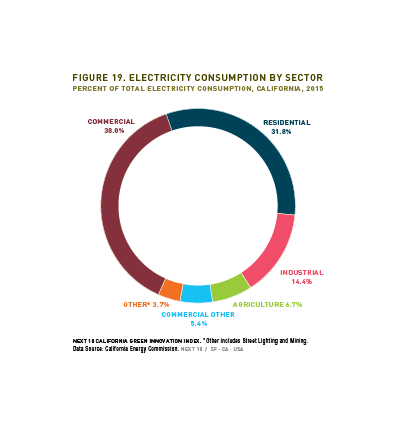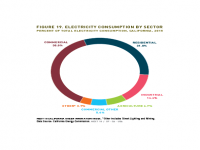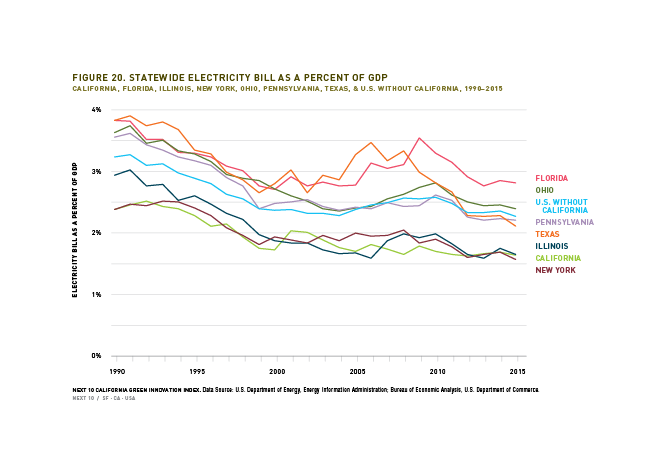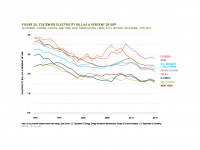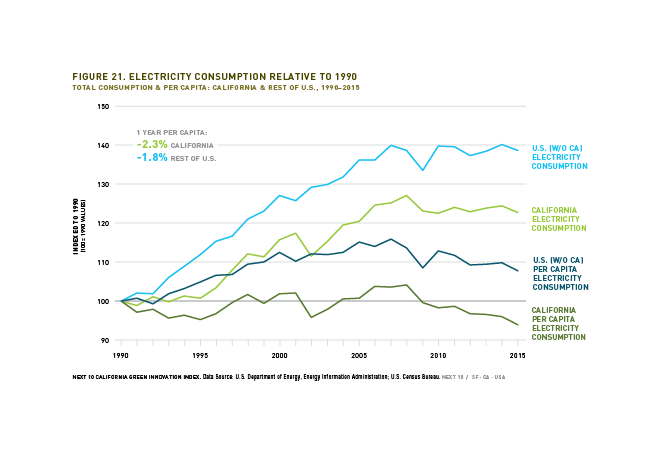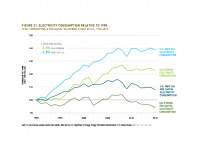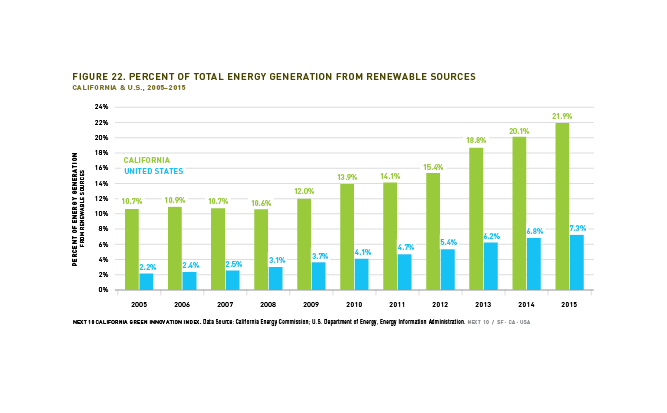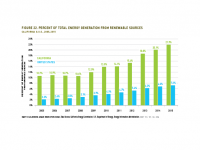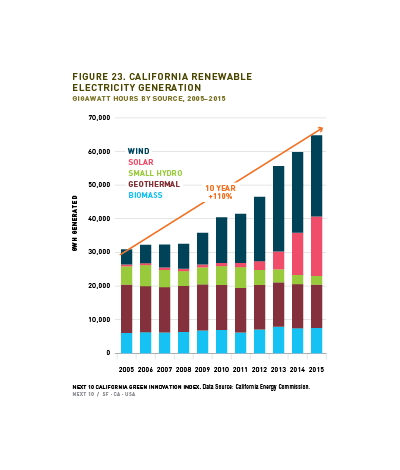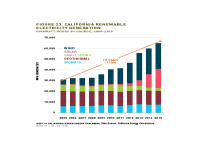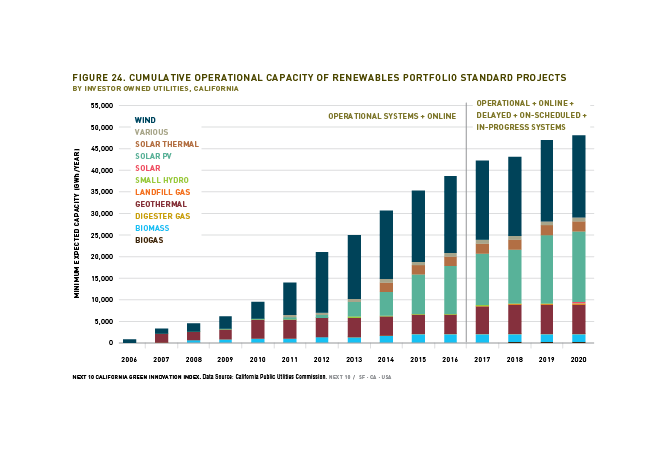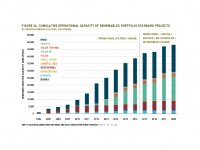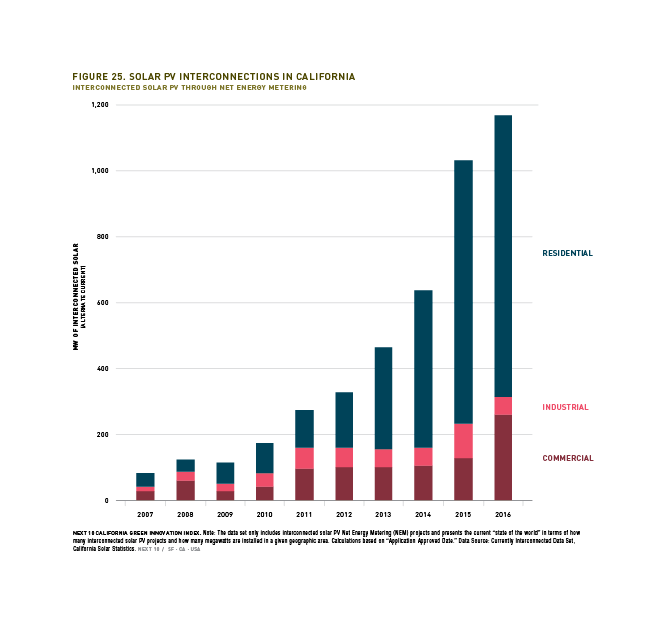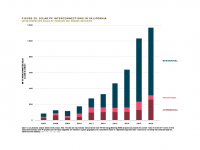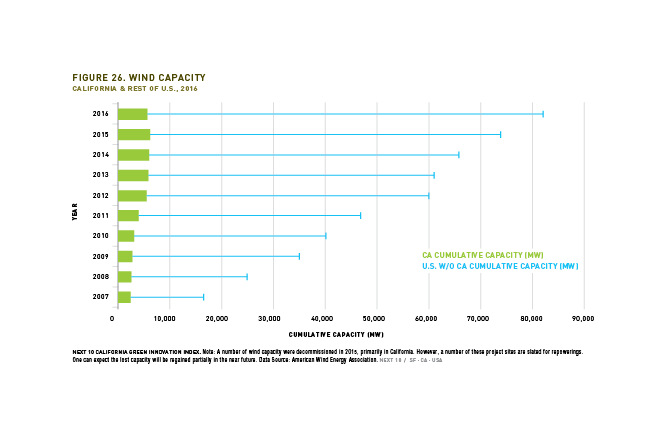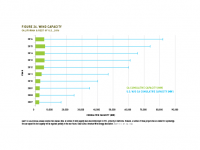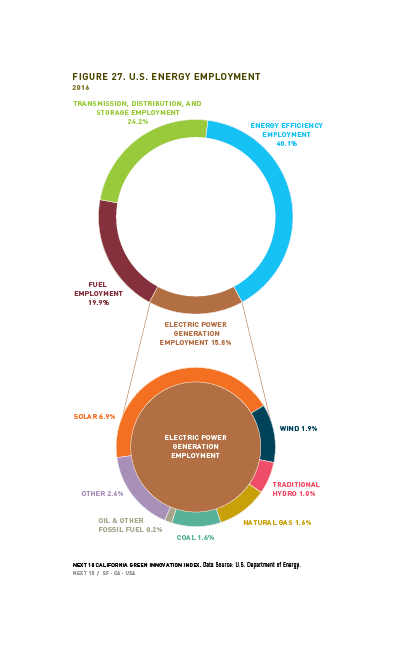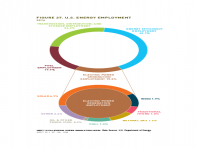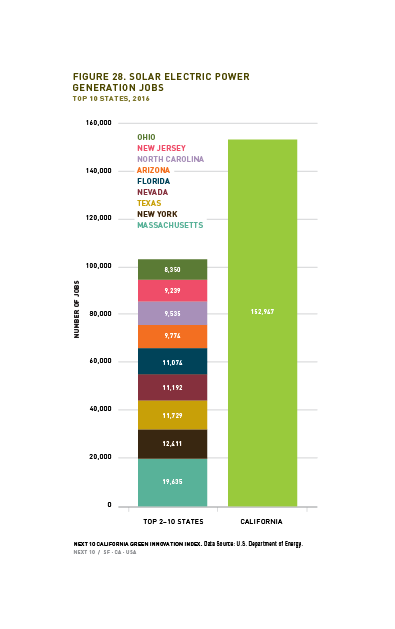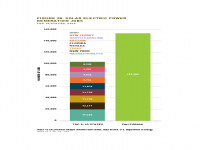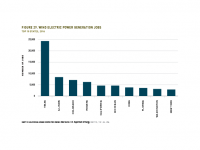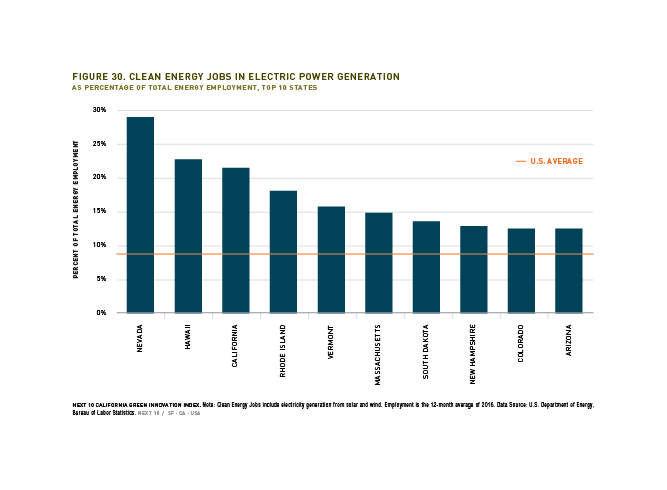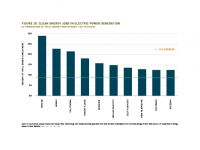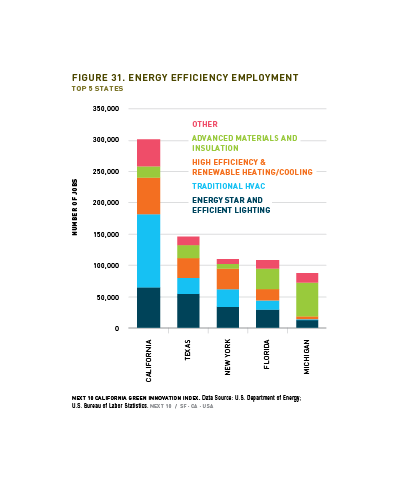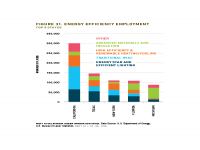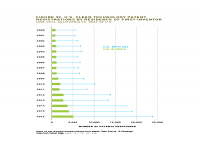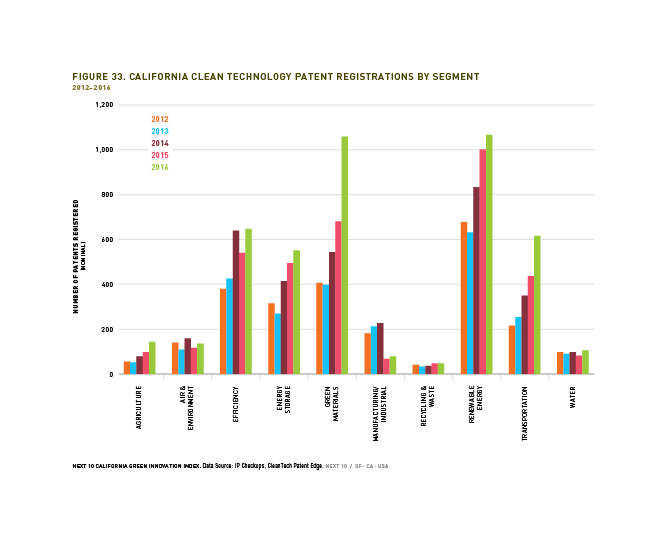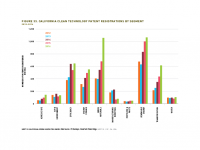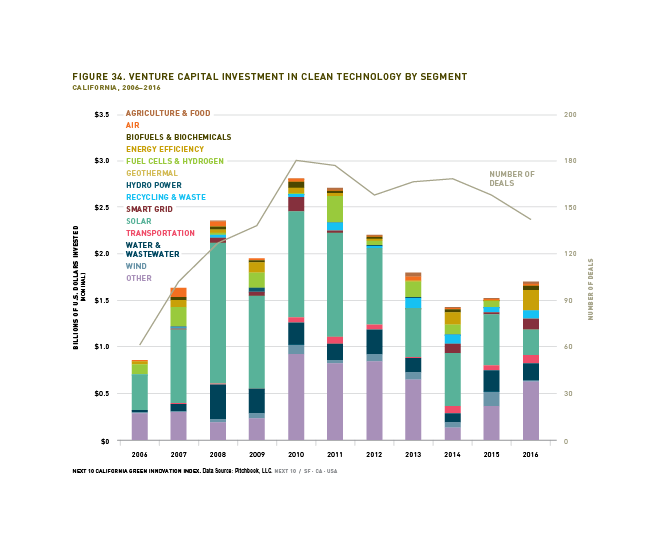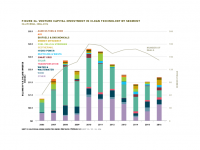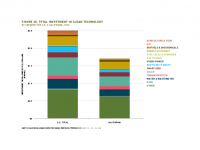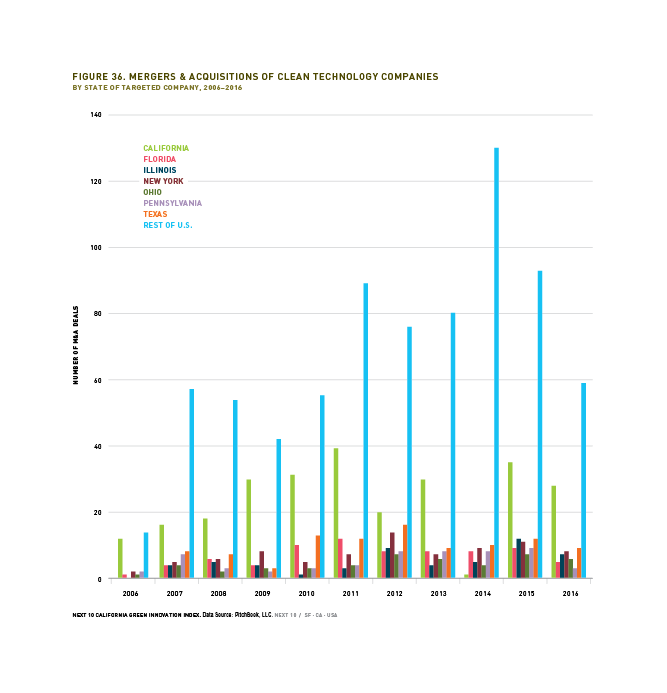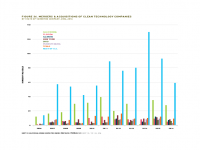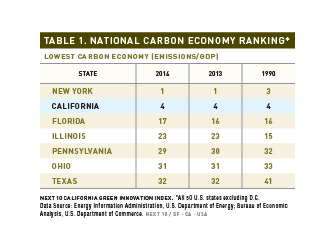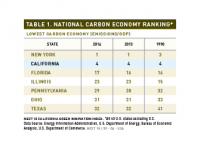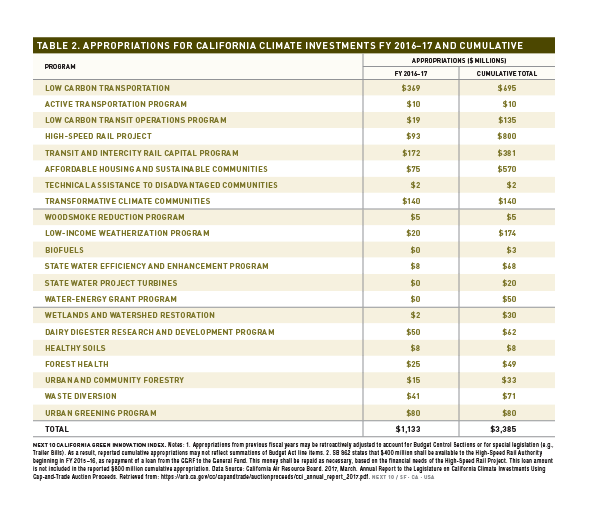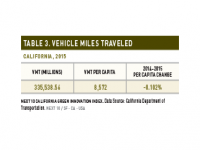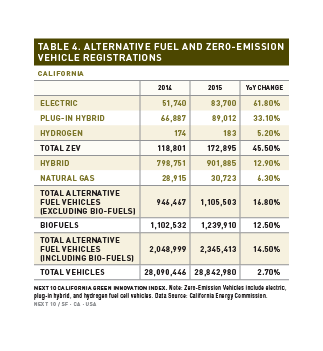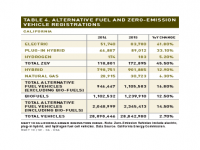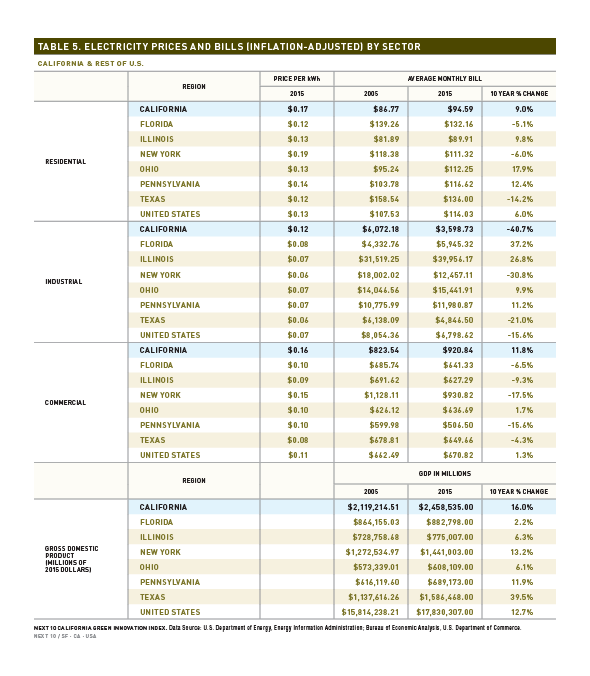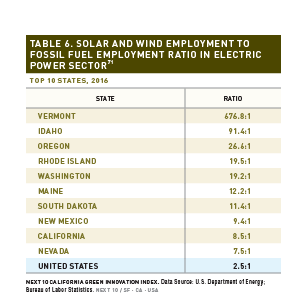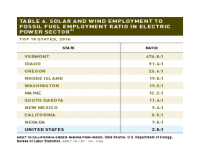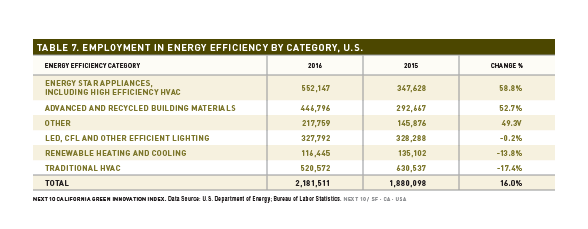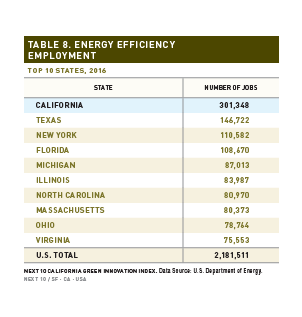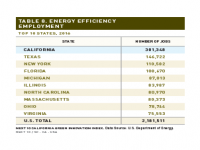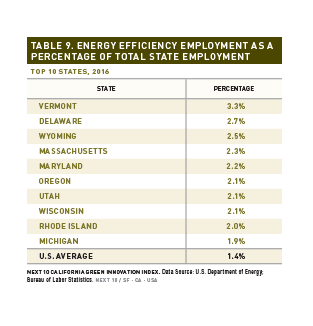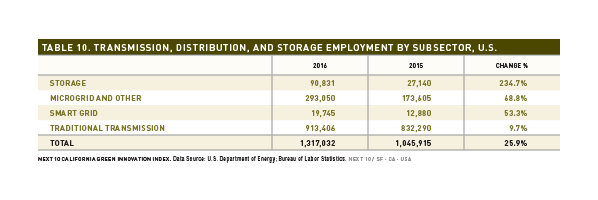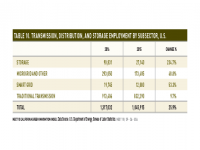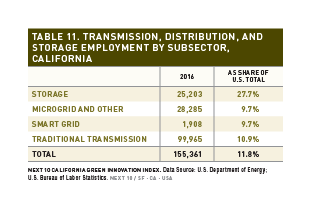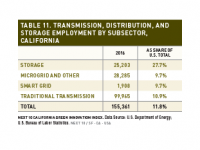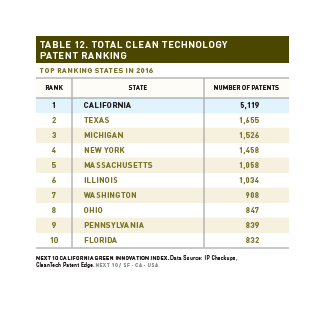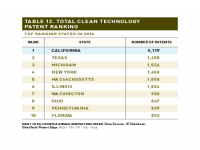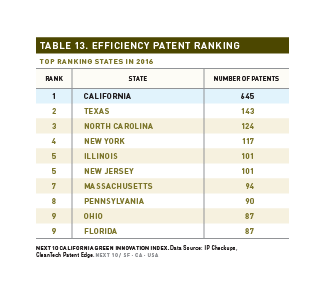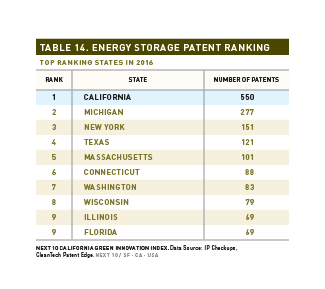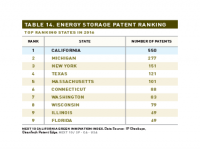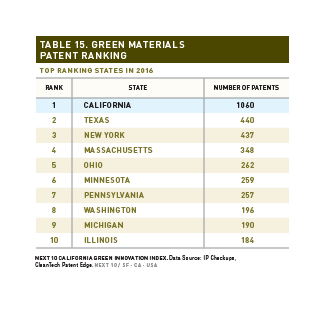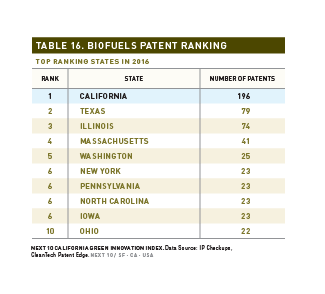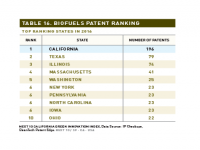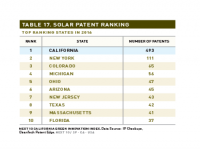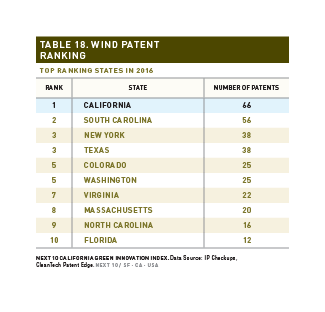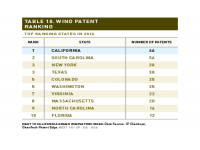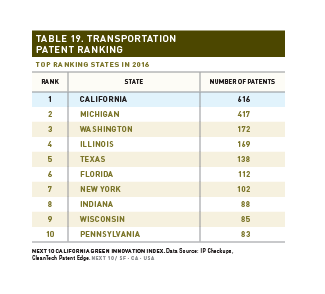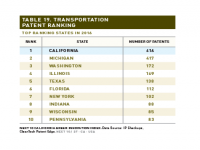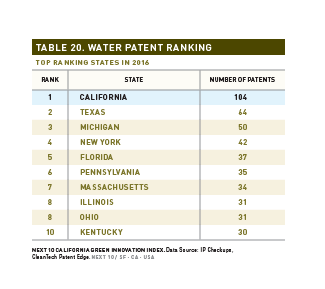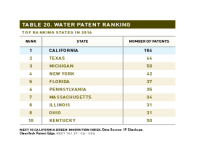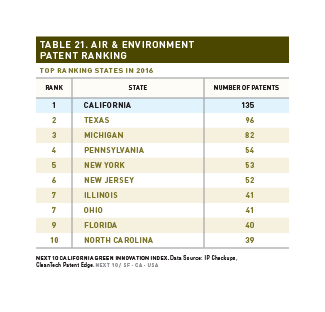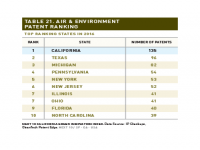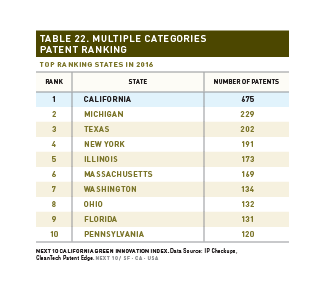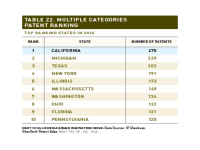Publications
2017 California Green Innovation Index
Ninth annual California Green Innovation Index finds California clean economy thriving but emissions-reduction challenges loom; transportation sector emissions spike, pose major challenges to state's 2030 climate goals.
This year's California Green Innovation Index continues to track key environmental and economic indicators at the regional, state, and national levels, but with a renewed focus on California's role as a global leader of climate policy and innovation. Despite U.S. withdrawal from the Paris Agreement and inaction at the federal level, California remains committed to working with other states, nations, and businesses to continue making progress toward a cleaner economy and more sustainable future.
The report finds that since the 2006 passing of California's landmark climate law AB32, the state's GDP has increased by almost $5,000 per person, nearly double the overall U.S. increase, while per capita emissions from 2006-2015 decreased by 12 percent. Job growth in California also outpaced the U.S. overall by 27 percent over the same period. California also moved up three spots from 2013 to 2014 to become the most energy-productive economy among the top 50 emitters in the world, while also reducing its carbon-intensity by 4.5 percent.
The transportation sector is the largest emitter in the state, accounting for 38.5 percent of total emissions. Despite an overall reduction in GHG emissions of 0.34 percent, transportation-related emissions were up by 2.7 percent in the state between 2014 and 2015. Lower gas prices and increased housing costs have pushed residents farther away from job centers, leading to an increase in commute times of 2.8 percent, while public transportation ridership fell 4.8 percent across the state.
California's focus on expanding renewable energy has also led to employment growth in clean energy sectors in the state. Wind and solar generation accounts for 8.5 jobs for every one job in fossil fuel generation in California, compared to 2.5 jobs for every one in the U.S. overall. California has 300,000 energy efficiency jobs, more than double the next highest ranked state of Texas with 146,000. Lastly, California is the top state for energy storage employment with 28 percent of the national workforce in the sector. These industries will continue to grow over the next century and further fuel economic growth in the state.
Next 10 owns the rights to this publication. Any usage of content from this publication is subject to our Terms of Use.
Renewable Energy:
- In 2015, California increased renewable electricity to 21.9 percent of total electricity generation, up 1.8 percent from 2014
- As of Q1 2017, California leads the nation in installed solar capacity with 18,963 MW. Solar generation increased by over 1,738 percent from 2010-2015 and by the end of 2016, the state's cumulative installed solar capacity was six times the total of the next-highest state (North Carolina)
- California's renewable generation increased 8.3 percent in 2015, with solar jumping 40.3 percent and small hydro dropping 6.1 percent due to the drought
- Wind generated 37 percent of the state's renewable electricity, and solar (27 percent) overtook geothermal (20 percent) as the second-largest source of renewable generation for the first time
- Fresno retained the top spot for industrial solar, while Los Angeles-Long Beach-Anaheim jumped from 3rd to 1st in commercial installations. San Diego-Carlsbad moved to first in residential solar installations
- For the U.S. as a whole, renewable generation increased 0.5 percent from 2014 to 2015 to reach 7.3 percent of total generation
Power Sector:
- California's electric-power sector was responsible for 19.1 percent of the state's greenhouse gas emissions in 2015, down 0.9 percent from 2014
- In California, per capita electricity consumption decreased 2.3 percent from 2014 to 2015, compared to a decrease of 1.8 percent in the rest of the U.S.
- The state needs to increase renewable generation by 24 percent between 2017 and 2020 to meet the next RPS goal and effective grid management to incorporate this level of renewables remains a key challenge for the state
Transportation:
- By the end of 2016, about half of all zero-emission vehicles (ZEVs) ever sold in the U.S. were bought in California and in Q1 of 2017, ZEVs accounted for nearly 5 percent of the state's auto sales
- In 2015, there were nearly 172,895 ZEVs registered in California, up 45.5 percent from 2014, and traditional gasoline vehicle registration increased 1.7 percent over the same period
- However the state's charging infrastructure is lagging - California only has 0.05 charging outlets per ZEV, ahead of only New Jersey and Alaska for availability of infrastructure
Clean Technology Innovation:
- Total U.S. investment in clean tech companies was $2.5 billion in 2016, down 7.4 percent from 2015
- In California, total investment in clean tech grew by 12 percent in 2016 to $1.7 billion, representing more than two-thirds of the total U.S. investment in clean tech
- California continues to lead in clean technology patent registrations with a total of 5,116 - more than 20 percent of all U.S. patent registrations in clean tech, which totaled 23,958
- California earned top rankings in every clean tech category in 2016: 1,060 in green materials (just less than the next 3 states combined); 645 relative to efficiency (more than the next five states combined); 616 in transportation (more than the next two states combined); and 493 for solar energy (more than the top 10 states combined)
International Comparisons (when California is treated as a country among the top 50 global emitters of greenhouse gases):
- California maintained top rankings as one of the least carbon-intensive emitters (2nd to France) and one of the highest shares of electricity from renewable energy sources (6th highest)
- California moved up two places, surpassing France and Italy, to become the 18th largest emitter
- California moved up three spots to the number one ranking as the most energy productive economy in 2014
- China remained the largest greenhouse gas emitter in 2014, followed by the U.S. and the European Union
Next 10 owns the copyright to all graphics in this section, and they are available for download and limited use, subject to our Terms of Use. Please contact Next 10 at info@next10.org with any questions.

